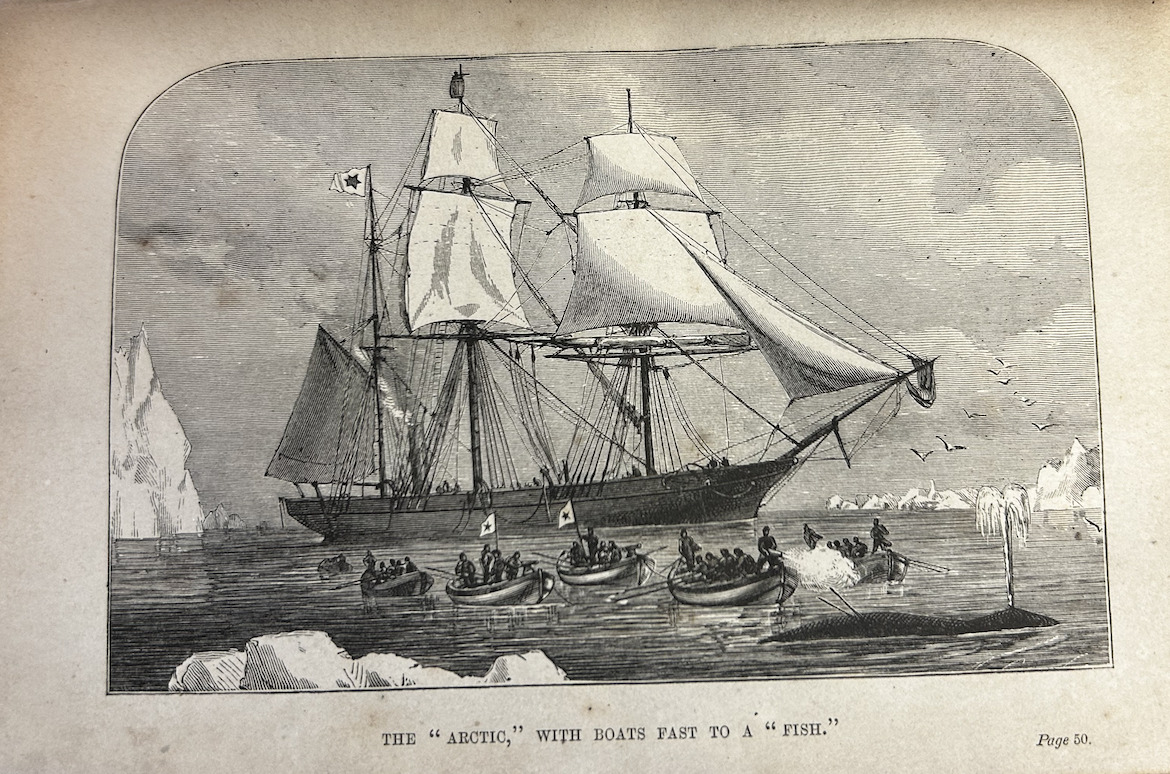Western Ships
Western Arctic exploration ships were specialized vessels designed to navigate the harsh conditions Baffin Bay during expeditions in the 18th and 19th centuries. These ships were built to withstand extreme conditions, like icy seas and unpredictable weather patterns. The ships played a vital role in the exploration and mapping of the Arctic region, as well as the search for the Northwest Passage.
The ships used for western Arctic exploration were typically sturdy and heavily built to withstand the crushing pressure of ice. They were often constructed with a strong wooden hull reinforced with iron plating or sheathing. The bow and sides of the ships were specially designed to facilitate icebreaking, featuring a rounded shape to allow the ship to ride up onto the ice and use its weight to crush and break it.
Learn about the stories of two western exploration ships and the Bay they traveled on.
The “Arctic,” a whaling ship, traveled to Baffin Bay in 1873. The main author of the book this drawing is part of, Commander Markham, set out on this expedition to gain experience in ice-navigation and document his travels. Markham worked alongside the captain of the ship, William Adams. The ship was built with steam power, which was an introduction to whaling ships that greatly reduced the dangers of navigating the Bay. This drawing depicts the crew of the “Arctic” going out in smaller boats (described as “fast boats” by Markham) to capture a harpooned whale.
The Polaris was a ship that played a significant role in Arctic exploration during the mid-19th century. It was constructed for an American expedition led by Charles Francis Hall in search of the North Pole. The Polaris was equipped with a steam engine, making it one of the earliest polar exploration vessels to have auxiliary steam power. This feature gave the ship an advantage by providing additional propulsion when needed, especially in situations where wind and sail power were insufficient or restricted due to ice conditions. The steam engine helped the ship to maneuver through ice-infested waters more effectively.
When the Polaris became trapped in Arctic ice in 1872, members of the "Arctic" expedition played a crucial role in rescuing the survivors of the Polaris expedition. The “Arctic” ran into the “Ravenscraig,” which had survivors of the “Polaris” on board. The ship itself was left behind on shore. Captain Adams decided to take some of the crew of the “Polaris” on board the “Arctic,” while some remained on the “Ravenscraig.”
Additional Sources:
Gargiulo, F. (2018, February 7). The Remaining Ships of the Heroic Age of Antarctic Exploration. Wayfinders. https://wayfinderadventures.com/ships-of-the-heroic-age/
Miller, N. (2023, January 9). What Happened to the Polaris Expedition?. Discovery UK. https://www.discoveryuk.com/mysteries/what-happened-to-the-polaris-expedition-and-did-it-lead-to-murder/
Nature Publishing Group. (n.d.). A Whaling Cruise to Baffin’s Bay and the Gulf of Boothia. Nature. https://www.nature.com/articles/011404b0


